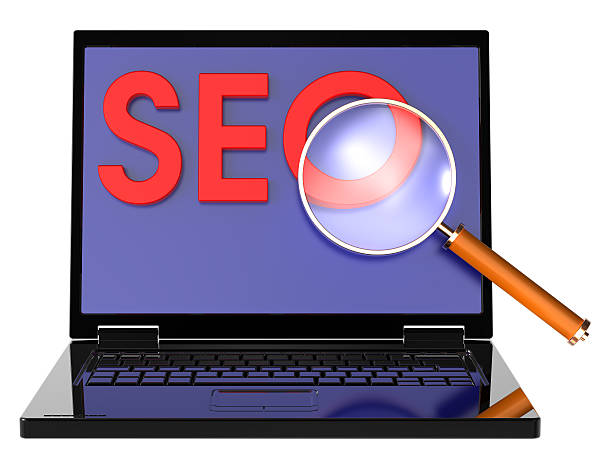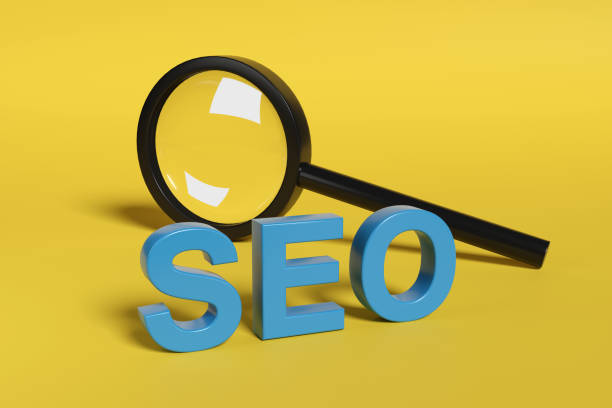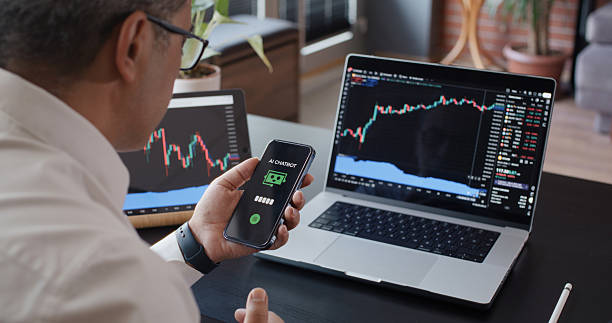What is Technical SEO and Why Is It Important?
In the world of #digital_marketing, technical SEO plays a vital role in the success of a website.
Technical SEO refers to a set of actions taken to optimize a website’s structure and infrastructure for search engines.
Unlike On-Page SEO and Off-Page SEO, this type of SEO does not directly deal with website content, but rather focuses on how search engines access and understand the website.
The importance of technical SEO stems from the fact that search engines like Google, in addition to content quality, also pay attention to technical factors for ranking websites.
A website with an improper technical structure, even with excellent content, may achieve low rankings in search results.
Therefore, optimizing technical SEO helps the website to be more effectively identified and indexed by search engines, consequently attracting more organic traffic.
In summary, technical SEO is the foundation of a successful SEO strategy.
By optimizing the technical aspects of your website, you can ensure that search engines can easily find and understand your website and display it to users in search results.
This will lead to increased website visibility, more traffic, and ultimately, achieving your business goals.
For more information about SEO, you can refer to reputable websites like this site.
Are you falling behind in competition with large online stores?
Rasaweb makes your business online with professional e-commerce website design and increases your market share!
✅ Increase brand credibility and customer trust
✅ Easy shopping experience leading to more sales
⚡ Act now to get a free website design consultation!
Checking and Fixing Crawl Errors in Google Search Console
Google Search Console is a free and powerful tool from Google that helps webmasters and SEO specialists monitor and improve their website’s performance in search results.
One of the most important parts of this tool is the Crawl reports.
Crawl is the process by which Google’s robots (Googlebot) examine your website’s pages and index their content.
Click here to preview your posts with PRO themes ››
Crawl errors indicate problems that prevent Google from accessing or properly understanding your website’s pages.
These errors can include the following:
- 404 Errors (Page Not Found): Pages that do not exist.
- Server Errors: Problems with the website server that prevent Google from accessing pages.
- Redirect Errors: Incorrect or chained redirects that confuse Google.
- Blocked by robots.txt file: Pages intentionally or unintentionally blocked from Google’s access by the robots.txt file.
Checking and fixing these errors is highly important, as they can lead to a decrease in website ranking in search results.
To fix these errors, you must first identify them in Google Search Console and then, by carefully examining the cause of each error, apply the appropriate solution.
For example, to fix 404 errors, you can redirect deleted pages to relevant pages or replace them with new content.
In general, regularly reviewing Crawl reports in Google Search Console and fixing existing errors helps improve the website’s technical health and increases its chances of achieving higher rankings in search results.
SEO and search engine optimization (Wikipedia SEO) is an important topic that requires knowledge and skill.
Optimizing Website Speed for SEO
Website speed is a crucial factor in SEO that directly impacts user experience (UX) and search engine rankings.
Google gives higher scores to faster websites because they provide a better user experience and keep users satisfied.
A slow website can lead to an increase in Bounce Rate, as users typically don’t have the patience to wait for pages to load and quickly leave the website.
You can use various methods to optimize website speed.
Some of these methods include:
- Image Optimization: Reducing image size without compromising quality is one of the simplest and most effective ways to increase website speed.
- Browser Caching Activation: By activating browser caching, website information is stored in the user’s browser, and pages load faster on subsequent visits.
- Using a CDN (Content Delivery Network): A CDN is a network of servers that stores your website’s content in different parts of the world and selects the closest server to users for loading pages.
- Reducing CSS and JavaScript File Sizes: By compressing and removing extra code in CSS and JavaScript files, you can reduce their size and increase page loading speed.
Click here to preview your posts with PRO themes ››
Furthermore, choosing a suitable hosting provider also affects website speed.
Using high-quality and high-speed hosting can significantly improve your website’s speed.
You can use various tools like Google PageSpeed Insights and GTmetrix to test your website’s speed.
Below is a table comparing the impact of some factors on website speed:
| Factor | Impact on Speed |
|---|---|
| Image Optimization | High |
| Browser Caching Activation | Medium |
| Using CDN | High |
| Reducing File Sizes | Medium |
| Quality Hosting | High |
Importance of Mobile-First Indexing and Mobile Optimization
Given the increasing use of mobile for internet searches, Google has introduced Mobile-First Indexing.
Mobile-First Indexing means that Google primarily examines the mobile version of websites for indexing and ranking.
This implies that if your website is not optimized for mobile, you might lose your ranking in search results.
To optimize your website for mobile, you should pay attention to the following:
- Responsive Design: Your website should automatically adapt to the screen size of different devices (mobile, tablet, desktop).
- Loading Speed: Your website should also load quickly on mobile.
- Usability: Your website’s navigation should be easy and understandable on mobile.
- Content: Your website’s content should be optimized for mobile (e.g., using larger fonts and shorter paragraphs).
Furthermore, using AMP (Accelerated Mobile Pages) can also help improve website loading speed on mobile.
AMP is an open-source framework that allows you to design your website pages to load very quickly on mobile.
By optimizing your website for mobile, you can provide a better user experience for mobile users and increase your chances of achieving higher rankings in search results.
Are your e-commerce website visitors leaving before making a purchase? Don’t worry anymore! With Rasaweb’s professional e-commerce website design services, solve the problem of not converting visitors into customers forever!
✅ Significant increase in conversion rates and sales
✅ Unique and attractive user experience
⚡ Contact us now for a free consultation!
Proper URL Structure and Its Impact on SEO
URL structure (internet address) is one of the important aspects of technical SEO that has a significant impact on website ranking in search results.
A proper URL should be:
- Short and Concise: Long and complex URLs make them difficult to understand and share.
- Readable: The URL should be such that users and search engines can easily identify the page’s topic from it.
- Include Keywords: Using keywords related to the page’s topic in the URL can help improve its ranking.
- Use Hyphens (-) Instead of Spaces: Use hyphens instead of spaces to separate words in the URL.
- Use Lowercase Letters: Use lowercase letters in the URL to prevent potential issues.
Furthermore, the URL structure should be logical and hierarchical.
This means that URLs should be designed to show the relationship between different pages of the website.
For example, a product page URL should also include the product category.
A proper URL structure not only helps improve SEO but also enhances user experience, making it easier for users to navigate your website.
Correct use of SEO leads to website progress and an increase in website ranking (PageRank) .
Importance of Schema Markup and How to Implement It
Schema Markup is a type of code that you can add to your website’s HTML to provide more information about the page content to search engines.
Schema Markup helps search engines better understand what your page is about and what kind of information it provides.
This can lead to the display of Rich Snippets in search results, which include additional information such as star ratings, prices, event times, and more.
Displaying rich search results can increase the click-through rate (CTR), as these results attract more user attention.
To implement Schema Markup, you can use various tools such as Google’s Structured Data Markup Helper.
This tool helps you generate the required Schema Markup code and add it to your website’s HTML.
There are various types of Schema Markup that you can use for different types of content.
Some of the most common types of Schema Markup include:
- Article: For news articles and blogs
- Product: For product pages
- Event: For events
- Recipe: For cooking recipes
- Organization: For organizational information
By using Schema Markup, you can help search engines better understand your website’s content and, consequently, increase your chances of achieving higher rankings in search results.
You can also use SEO training courses for further education.
Optimizing Robots.txt and Sitemap for Better Crawling
The Robots.txt file is a text file located in the root of your website that tells search engine robots (like Googlebot) which pages of your website they should not crawl.
This file can be used to prevent unnecessary pages, duplicate pages, or pages containing sensitive information from being crawled.
A Sitemap is an XML file that provides a list of all your website’s pages along with information such as the last update date and the importance of each page.
A Sitemap helps search engines easily find and index all pages of your website.
Optimizing Robots.txt and Sitemap for better crawling is an important aspect of technical SEO.
To optimize the Robots.txt file, you must ensure that you have only blocked pages that truly do not need to be crawled.
Blocking too many pages can lead to a decrease in your website’s ranking in search results.
To optimize the Sitemap, you must ensure that all important pages of your website are listed in the Sitemap and that the Sitemap is regularly updated.
Below is a table showing the importance of using robots.txt and sitemap:
| File | Purpose | Benefits |
|---|---|---|
| robots.txt | Control search bot access | Prevent crawling of unnecessary pages, reduce server load |
| Sitemap.xml | Introduce website pages to search engines | Faster and more complete indexing of website pages |
Checking and Fixing Duplicate Content Issues
Duplicate Content refers to content that exists on multiple pages of a single website or on multiple different websites.
Duplicate Content can negatively impact website ranking in search results, as search engines may not be able to determine which page should rank higher.
Various reasons can lead to Duplicate Content.
Some of these reasons include:
- Use of URL Parameters: Using URL parameters for tracking traffic or filtering content can create duplicate pages.
- AMP and Non-AMP Pages: If your website has both AMP and non-AMP pages, search engines might identify them as duplicate pages.
- Copied Content from Other Websites: Using copied content from other websites is one of the most common reasons for duplicate content.
To resolve Duplicate Content issues, you can use various methods.
Some of these methods include:
- Using Canonical Tags: A Canonical tag tells search engines which page is the original version of a piece of content.
- 301 Redirect: A 301 redirect tells search engines that a page has been permanently moved to another page.
- Noindexing Duplicate Pages: You can use the Robots.txt file or the noindex tag to prevent duplicate pages from being indexed.
Checking and fixing Duplicate Content issues is an important aspect of technical SEO that can help improve your website’s ranking in search results.
One of the SEO services is duplicate content removal.
Is your e-commerce website ready to attract maximum customers and increase sales? Rasaweb transforms your online business with modern and efficient e-commerce website designs.
✅ Increased speed and improved SEO
✅ Excellent user experience on mobile and desktop⚡ Get a free e-commerce website design consultation from Rasaweb!
Optimizing Internal and External Link Structure
Internal and external link structure is a crucial factor in SEO that significantly impacts website ranking in search results.
Internal links refer to links that connect different pages within a single website.
External links refer to links that point from one website to another website.
Optimizing internal link structure can help improve the following:
- Crawling and Indexing: Internal links help search engines easily find and index all pages of your website.
- Authority Transfer: Internal links can transfer the authority of one page to other pages.
- User Experience: Internal links can help users easily navigate your website and find the information they need.
Optimizing external link structure can help improve the following:
- Website Authority: External links from reputable websites can help increase your website’s authority.
- Traffic: External links can direct traffic from other websites to your website.
To optimize internal and external link structure, you should pay attention to the following:
- Using Appropriate Anchor Text: Anchor text is the text connected to a link. The anchor text should be relevant to the topic of the linked page.
- Creating Natural Links: Internal and external links should be naturally placed within the content and should not be artificially created.
- Linking to Relevant Pages: Internal and external links should point to pages that are relevant to the source page’s topic.
By optimizing internal and external link structure, you can help search engines better understand your website and, consequently, increase your chances of achieving higher rankings in search results.
SEO link building is one of the main methods for increasing website ranking.
Monitoring and Analyzing Technical SEO Performance
Monitoring and analyzing technical SEO performance is a crucial step in an SEO strategy.
By monitoring and analyzing, you can identify technical issues on your website and take action to resolve them.
You can also evaluate the impact of changes made by reviewing technical SEO performance and refine your SEO strategy.
For monitoring and analyzing technical SEO performance, you can use various tools such as Google Search Console, Google Analytics, and specialized SEO tools.
Some of the most important metrics to consider in technical SEO monitoring and analysis include:
- Crawl Errors: Checking and fixing crawl errors in Google Search Console
- Website Speed: Checking website speed using Google PageSpeed Insights and GTmetrix tools
- Mobile-Friendliness: Checking website compatibility with mobile using Google’s Mobile-Friendly Test
- Duplicate Content: Checking and resolving duplicate content issues
- Schema Markup: Checking the correct implementation of Schema Markup
By regularly monitoring and analyzing technical SEO performance, you can ensure the technical health of your website and improve its ranking in search results.
In general, an optimized website compliant with technical SEO principles (Technical SEO) has a higher chance of success.
Frequently Asked Questions
| Question | Answer |
|---|---|
| What is SEO? | SEO, or Search Engine Optimization, is the process of increasing the quality and quantity of website traffic by improving the website’s ranking in natural (organic) search engine results like Google. |
| What are the main types of SEO? | SEO is divided into three main categories: On-Page SEO, Off-Page SEO, and Technical SEO. |
| What does On-Page SEO include? | On-Page SEO includes optimizing elements within the website, such as keywords, Title Tags, Meta Descriptions, content, URL structure, images, and internal links. |
| What is Off-Page SEO? | Off-Page SEO refers to activities outside the website that help improve its ranking, such as Backlink Building, social media marketing, and Brand Mentions. |
| What is Technical SEO? | Technical SEO deals with optimizing the technical aspects of a website to help it be better crawled and indexed by search engines. This includes site speed, mobile-friendliness, site structure, Sitemaps, and the Robots.txt file. |
| What role do Keywords play in SEO? | Keywords are the phrases that users enter into search engines. Proper and targeted use of relevant keywords in content and site elements helps search engines understand your page’s topic and display it for relevant searches. |
| What is a Backlink and why is it important? | A backlink, or inbound link, is a link from one website to another. Backlinks act as a “vote of confidence” from other sites for search engines and play a crucial role in a website’s authority and ranking, especially if they come from reputable sites. |
| How does quality content affect SEO? | Quality, relevant, comprehensive, and unique content not only attracts and retains users but also shows search engines that your page is valuable. This helps improve ranking, reduce Bounce Rate, and increase user time on the site. |
| Why is website loading speed important for SEO? | Website loading speed is a crucial ranking factor for Google. Faster sites provide a better user experience, have lower bounce rates, and are preferred by search engines. |
| Is SEO a one-time process? | No, SEO is an ongoing and long-term process. Search engine algorithms are constantly changing, competition is increasing, and website content also needs updating. Therefore, SEO requires continuous monitoring, analysis, and optimization. |
And other advertising agency services from Rasaweb in the field of advertising
- Smart SEO: Revolutionize SEO ranking improvement with dedicated programming.
- Smart Advertorial: A dedicated service for growing user engagement based on real data.
- Smart Digital Branding: A fast and efficient solution for increasing website traffic with a focus on attractive UI design.
- Smart Advertising Campaign: Professional optimization for customer acquisition using key page optimization.
- Smart Advertising Campaign: Transform customer acquisition with the help of key page optimization.
And over hundreds of other services in the field of internet advertising, advertising consultation, and organizational solutions
Internet Advertising | Advertising Strategy | Advertorial
References
What is Technical SEO?
Faradars Technical SEO Training
Zero to One Hundred Technical SEO – Parsian Academy
Comprehensive Guide to Technical SEO | Seokar
? Are you ready to transform your business in the digital world? Rasaweb Afarin Digital Marketing Agency provides comprehensive solutions, from e-commerce website design to search engine optimization and social media management, paving your path to online success. Contact us today and revolutionize your business’s future.
📍 Tehran, Mirdamad Street, next to Bank Markazi, Southern Kazeroon Alley, Ramin Alley, No. 6















